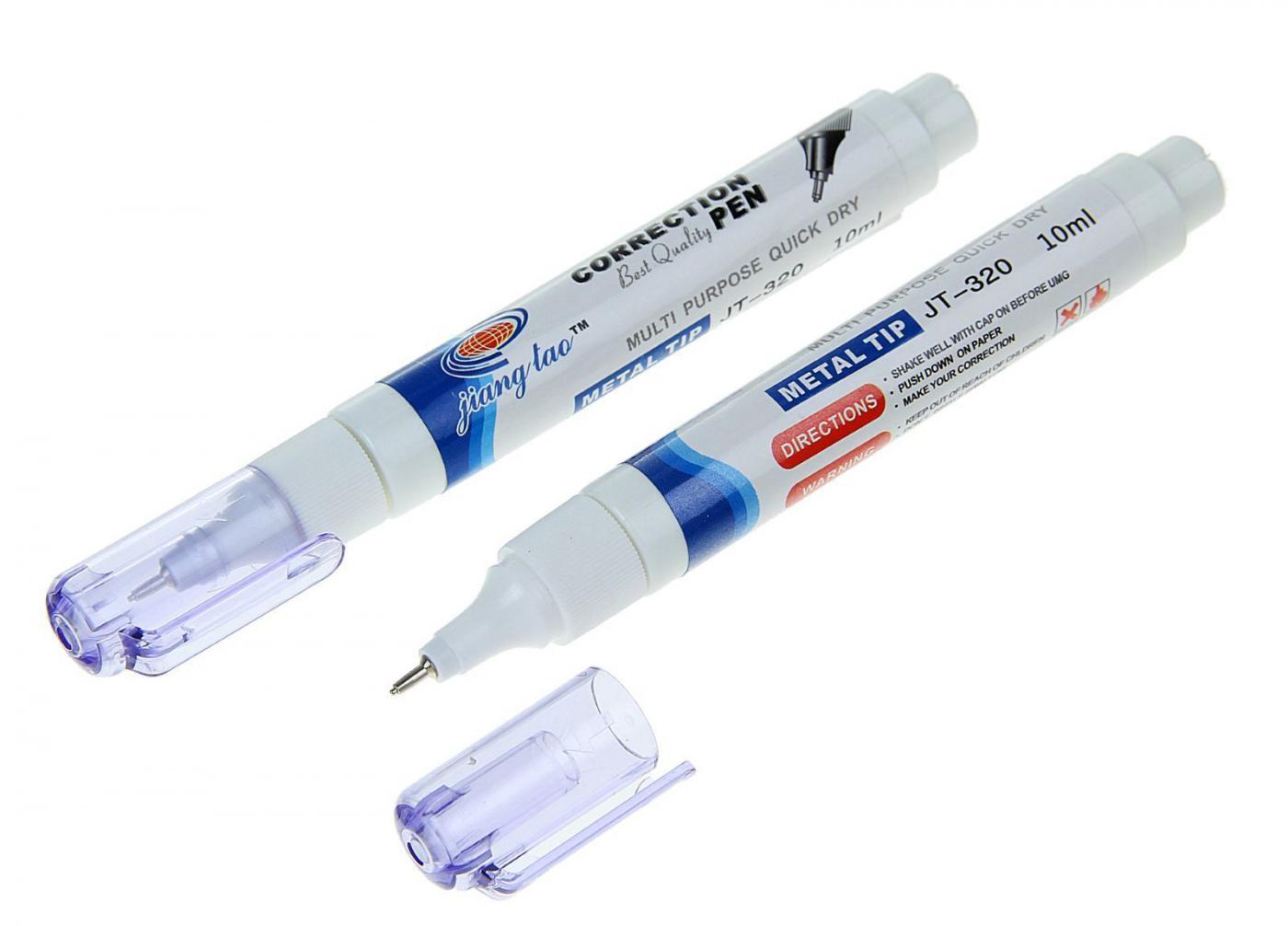Office workers and school students most often face the problem of corrector staining. In order to stir the lubricating liquid, the stroke pencil must be shaken. One awkward movement, and splashes can fall on surrounding objects and clothing. A drop of putty dried on clothes creates a whole problem that makes you say goodbye to your favorite blouse, trousers or shirt. However, this does not threaten those who know several ways to remove putty from clothes.
Who hasn't used a corrector at least once? This is a very convenient clerical invention, because everyone can make a mistake, and thanks to a stroke, it can be well disguised. If a drop of putty has already fallen on clothes, it will not be so easy to wipe it off. You can clean the stain with a rag and wash it with water, but this does not give the desired effect in all cases.
What to do if there is a stain from the corrector on clothes
The basic rule is to immediately remove the liquid immediately after it gets on clothing. If the putty is absorbed into the fabric fibers, then it will be harder to remove it. Much depends on the composition of the fluid inside the corrector. When the stain is set, proceed as follows:
- quickly blot the stain with a napkin until it begins to dry;
- after paying attention to the composition of the corrective putty - it will depend on how to remove its residues from clothes.
How to get stains out...
…after a water-based concealer
The stroke liquid is made on the basis of water, emulsion or alcohol.In the first case, it is easiest to remove the putty from clothes; it is enough to wipe off the remnants of the corrector with a napkin and blot the traces well with a wet rag. At home, you can wash the item in warm water by hand or in a washing machine.
If the remains of the putty are still not completely removed, you can wash the stroke from the clothes with laundry soap or water with the addition of ammonia, first apply, leave for a while, and then wash well. In the case of a water corrector, you can use a stain remover: pour it on the stain, leave it for a couple of minutes, and then load the contaminated item into the machine and pour another 100 ml of the product directly into the laundry compartment. In this case, the temperature regime must be chosen 30-35C, no more.

Dry corrector strips are washed in exactly the same way as a water-based liquid stroke.
... after putty, which contains alcohol or emulsion
If the liquid is alcohol or emulsion based, then it will be more difficult to cope with the putty. Such proofreaders are used less often, so the likelihood of staining clothes with them is minimal - in the production of stationery for this purpose, water is mainly used. But if such an unfortunate incident has already happened, then you can remove the corrector from clothes at home by the following means:
- Alcohol putty is rubbed off, paradoxically, with alcohol.On a cotton pad you need to pour a little ethanol, vodka and even tonic for the skin of the face and rub it a little on the trace of the corrector. After that, you can wash the whole thing or rub the contaminated area with soap and rinse it. As a rule, there will be no trace of a stain after putty with an alcohol liquid. Any alcohol can be used, but denatured and ammonia showed themselves most effectively. Before using these products, it is recommended to dilute them with water in a ratio of 2: 1 - one part alcohol to two parts water.
- An emulsion-based stroke is a decently penetrating agent. The liquid is oily and after getting on the clothes a greasy stain forms, so you definitely can’t do without a good solvent. In this case, white spirit or acetone-containing nail polish remover is suitable. Pure acetone can only be used if the thing is white, as it can eat paint from a soiled piece of clothing. Delicate items must be handled with extreme caution, it is better to dilute the solvent a little with water. It is required to turn the blouse or pants inside out and put a handkerchief or a piece of any clean fabric in the place where the stain has formed. With a cotton pad, you need to apply the solvent to the fabric, moving from the edge of the contamination to the middle, and at the same time try not to press hard. When the stain is completely removed, you should quickly rinse the treated area and send the item to the wash. It happens that a barely noticeable mark remains on the clothes - it all depends on the fabric and, if this happens, it is better to repeat the procedure. In most cases, it is completely possible to remove the stroke corrector from trousers or blouses in this way.
- You can remove an oily stain after emulsion putty with gasoline or kerosene, but delicate and synthetic colored items may deteriorate after these products. In order to understand whether this solvent can spoil the color of the thing, it is better to first try it on a small inconspicuous area of \u200b\u200bthe fabric on the wrong side. From white and light things, you can remove the corrector with gasoline without much fear.

If the thing is your favorite, not cheap, and you can’t do without it, for example, it’s a uniform or an expensive business suit, then you shouldn’t experiment - it’s better to send it to dry cleaning. Before that, you do not need to process it in any way - just gently brush off the putty with a napkin.
Helpful Hints and Cautions
In order for the putty to be removed quickly, and the clothes not to deteriorate, you need to refer to some of the recommendations of those who have already experimented with removing stains after the corrector.
- Any chemical substance, whether it be gasoline, acetone or any other solvent, should not be rubbed into the fabric strongly - this damages the fibers. You can only carefully and lightly walk over the resulting stain.
- To prevent the product from spreading strongly on the surface of the fabric, it is necessary to put some clean rag under it. The area around the stain must be wetted with water - then the caustic solvent will not spread beyond the place of contamination.
- If for some reason the putty did not get wet before it dried, you can try to rub it off with a nail file before processing.
- Delicate fabrics are always processed from the wrong side, especially if white spirit or acetone is used to remove the putty.
- The solvent must be removed immediately after the contamination has disappeared - this chemical should not remain on clothing for a long time.
- If there is no alcohol or some kind of solvent on hand, and there is an important meeting ahead, then alcohol can be used to remove the putty from the jacket. It is impossible to remove the corrector with cognac or any dark tincture, as stains will remain from them! Only colorless alcohol, such as vodka, is suitable for this.
- The water for washing should not be very hot, but it is better to set the speed to high so that the remnants of the product and putty are well washed from the clothes.
- It is not worth rubbing a newly formed stain on a dry one - this way you can only drive the putty deeper into the fabric fibers. After the stain has been set, you can only brush off fresh traces with a napkin or cotton swab and, if possible, change clothes and soak the item in warm water.
Obviously, there are many improvised means in order to remove the corrector from the fabric. The above tips for cleaning clothes from the corrector will help remove the putty and wear the thing for more than one year. In order to remove the stain, you can try to apply salt and soda, but usually such cleaning does not give the desired results. Corrector fluid is a chemical, so it can also be effectively removed only with a chemical.
